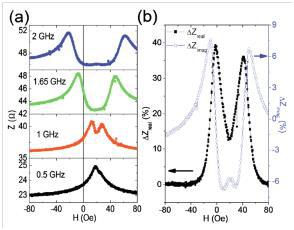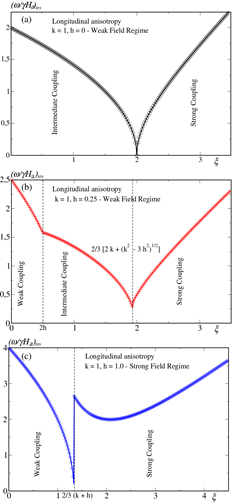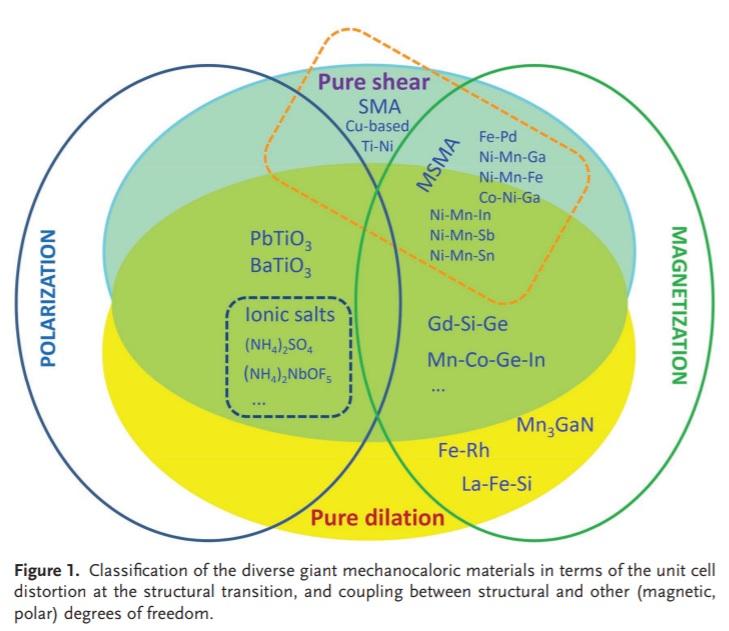People involved: C. Garcia and L. Lizardi.
The magnetoimpedance (MI) phenomenon has become a significant area of research due to the current development in the applications in magnetic sensor technology and the uses of ‘composites” as smart sensors [1]. Various soft magnetic materials such as amorphous with cylindrical geometry, ribbons and nanocrystalline films show large changes in the impedance at high frequency, typically in the range of 50-100%, under the application of DC magnetic fields on the order of few hundreds of A/m, making MI elements very attractive for low field detection being currently used in the automotive and communications sensor industry.
The MI characteristics depending on the dc magnetization process are essentially nonlinear around the zero field point, which makes a straightforward analysis and derivation of an appropriate signal difficult. In samples with a magnetic anisotropy transverse to the applied field, the GMI has either a maximum at zero field or two symmetrical sharp peaks at a field near the anisotropy field. Such nonlinear characteristics are disadvantageous for sensor applications near zero field. Linearization is generally performed by applying a dc bias field to the sensing element to obtain asymmetrical characteristics, but this adds to the complexity of the device and it is disadvantageous for many practical applications, where, for example, low energy consumption is required or in smart sensory composite [2] with remote interrogation, so methods to establish an asymmetrical MI (AMI) response are desirable to improve linearity and reduce the required dc bias. Establishing asymmetrical magnetic configuration helps to improve linearity and reduce the needed DC bias. It has been shown [3, 4] that the position of asymmetrical magnetoimpedance peaks can be tunned by using ferromagnetic (FM)/ antiferromagnetic (AFM) thin films whose magnetic anisotropy is modified by an exchange bias field. The MI can be further shifted to higher magnetic field as the probe frequency increases. Thus, linear MI behaviour can be tune around zero external field by changing the current frequency without the need for external biasing fields or additional coils. Our objective is to optimize the GMI response and minimize the size to reduce even further the power consumption.
Theoretical approach through the classical expression of the impedance of planar magnetic conductor, modeled with a modified Stoner-Wohlfarth energy density, which takes into account the unidirectional anisotropy present in the system.


[1] M. Knobel, M. Vázquez, L. Kraus, in Handbook of Magnetic Materials, Elsevier Science, Amsterdam,. Vol. 15, Chap. 5. (2003).
[2] D.P. Makhnovskiy, L.V. Panina, C. Garcia, A.P. Zhukov, J. Gonzalez, Phys. Rev. B 74, 064205 (2006)
[3] C. Garcia, P. Vargas, J. M. Florez, C. A. Ross, Appl. Phys. Lett. 96, 23 (2010)
[4] C. Garcia, P. Vargas, J. M. Florez, C. A. Ross, J. Appl. Phys. 109, 07D735 (2011)
People involved: C. Garcia, P. Landeros, R. Gallardo, A. F. Franco and C. Gonzalez.
Exchange springs (ES) are multilayer structures composed of alternating hard and soft magnetic materials that are coupled through exchange interaction. They are of great interest for the scientific community due to their versatility, finding a place in several different applications such as high performance permanent magnets, heat assisted magnetic
recording, and spin-torque transfer devices. This versatility stems from the heterogeneous nature of the ES, which provides the system with high thermal stability and coercivity (hard material) while keeping a high saturation magnetization (soft material).
The ES exhibit different magnetic behavior depending on the thickness of the soft phase. Thus, changing the thickness of the soft phase provides a reliable method for controlling the magnetization properties of the structure. For example, it has been shown[1] that changing the thickness of the soft layer of an ES leads to substantial changes in its ferromagnetic resonance frequency (FMR). The magnetic properties of the ES are also dependent on the nature of the interaction at the interface[2], providing the possibility to obtain interesting effects by tailoring the interlayer coupling.
Materials exhibiting Perpendicular magnetic anisotropy (PMA) are an important type of ES materials where the anisotropy component is predominantly in the direction perpendicular to the plane of the film. Nowadays, they are one of the fundamental components of the hard drive technology, and are potential candidates to further improve this technology through their use in bit patterned recording media and magnetic random access memories. Furthermore,
when tailored to have a high anisotropy, low saturation magnetization, high spin polarization, and/or low gilbert damping constant, materials with PMA can be used to improve greatly the performance of spin-torque transfer devices and magnetic tunnel junctions.
Materials with PMA present a complex mechanism for the relaxation of the magnetization, due to the impurities at the interface which arise local variations on the anisotropy throughout the material. These variations of the anisotropy, in combination with the internal and external interactions, induce bubble and labyrinth domain formation, and eventually a switching due to domain wall motion[3]. It has been shown[4,5] that the magnetization processes and dynamics of a material with PMA depends strongly on the material, the configuration of the thin films, and the interactions. Thus, there is a great interest to understand the different processes that affect the behavior of these materials.
Within our group, this line of research is being explored theoretically and experimentally. Samples are fabricated with the sputtering system, and then characterized through hysteresis cycles and FMR by using our MOKE and FMR setups. Micromagnetic and atomic simulations of the magnetic ordering, hysteresis cycles, magnetic susceptibility, and FMR are performed.
Characterization of the materials through comparison of experimental hysteresis cycles to the Preisach model is being done, and analytical methods for calculating the susceptibility and/or the FMR are being explored.
Furthermore, by approaching the ES and PMA materials as a multilayer structure, all our methods and techniques can be adapted to be used in more general multilayer systems.


[1] S. Tacchi, et al., J. Phys. D: Appl. Phys. 47, 495004 (2014).
[2] A. F. Franco, H. Kachkachi, J. Phys.: Condens. Matter 25, 316003 (2013).
[3] J. E. Davies, et al., Phys. Rev. B 70, 224434 (2004).
[4] R. Sbiaa, et al., J. Appl. Phys. 107, 103901 (2010).
[5] S. Pal, et al., Appl. Phys. Lett. 98, 082501 (2011).
[6] A. F. Franco, et al., J. Appl. Phys. 116, 243905 (2014).
People involved: J. Flores, C. Gonzalez and C. Garcia
A fundamental characterization technique for the current research in spintronics is the ferromagnetic resonance (FMR) spectroscopy. For many decades, FMR spectroscopy has been carried out using single frequency microwave cavities [1]. More recently, the apparition of broadband FMR spectroscopy have meant a qualitative jump in the effciency of FMR to extract material parameters from ferromagnetic thin lms. Moreover, the recent discovery of the spin recti cation effect (SRE) has allowed to perform FMR spectroscopy on nanometric structures.

[1] I. S. Maksymov and M. Kostylev, \Broadband stripline ferromagnetic resonance spectroscopy of ferromagnetic lms, multilayers and nanostructures", Physica E 69, 253{293 (2015).
People involved: C. Romanque, C. Gonzalez and C. Garcia
The research area explores the relationships between spin and heat transport in materials [1]. Within the context of energy conversion applications, thermal spin transport provides conceptually new mechanisms for solid-state thermal-to-electrical energy conversion that may be used for waste heat recovery and temperature control. We have successfully developed an alternative methodology to measure the Spin Seebeck effect in interface ferrimagnetic insulator/non-metal with an unprecedented level of accuracy. We are currently interested in the study of spin transport properties (Spin Seebeck effect, Spin MR, etc.) a thermoelectric effects such as Nernst effect, Anomalous Nernst effect, Ettingshausen effect, etc.

[1] Bauer, G. E. W., E. Saitoh, and B. J. van Wees, 2012, Nat. Mater. 11, 391
People involved: P. Ibarra and C. Garcia
The magnetocaloric effect (MCE) is a magneto-thermodynamic phenomenon in which a temperature change of a suitable material is caused by exposing the material to a changing magnetic field. In that part of the refrigeration process, a decrease in the strength of an externally applied magnetic field allows the magnetic domains of a magnetocaloric material to become disoriented from the magnetic field by the agitating action of the thermal energy (phonons) present in the material. If the material is isolated so that no energy is allowed to (re)migrate into the material during this time, (i.e., an adiabatic process) the temperature drops as the domains absorb the thermal energy to perform their reorientation. The randomization of the domains occurs in a similar fashion to the randomization at the curie temperature of a ferromagnetic material, except that magnetic dipoles overcome a decreasing external magnetic field while energy remains constant, instead of magnetic domains being disrupted from internal ferromagnetism as energy is added. Our research mainly focuses on materials produced by ultrafast cooling such ribbons obtained by melt-spinning and microwires obtained the Taylor Ulitovskii technique.

[1] A.M. Tishin, Y.I. Spichkin, Int. J. Refrig. 37 (2014) 223
[2] T. Gottschall, A. Gracia-Condal, M. Fries, A. Taubel, L. Pfeuffer, L. Mañosa, A. Planes, K. P. Skokov, O. Gutfleisch, Nat. Mater. 17 (2018) 929.
[3] K.A. Gschneidner Jr., K. Pecharsky, A.O. Tsokol, Rep. Prog. Phys. 68 (2005) 1479.
[4] L. Mañosa, and A. Planes, Adv. Mater. 29 (2017) 1603607.